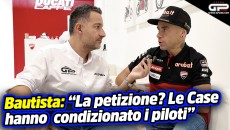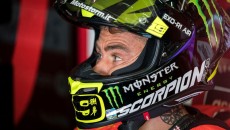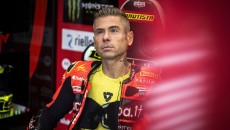The presentation in Indonesia of the Honda team, which nonchalantly switched from Repsol orange to Castrol red (?), surprised us because, throughout the entire event, there was no mention of Romano Albesiano, HRC's new technical director. Alberto Puig got on the stage with former championship winner, Joan Mir, and Luca Marini, but without the engineer from Cuneo whose career began in Cagiva and then Piaggio in 2005.
With a degree in aeronautical engineering, Albesiano can be identified as the father of the RS-GP. And, if Gigi Dall'Igna legitimized spoilers in the MotoGP, we owe Romano a decidedly sophisticated iteration of ground-effect fairings.
This idea would've appealed to Soichiro Honda who, unlike any other manufacturer, never bound itself to patterns, building two- and four-stroke, two-, three-, four-, five-, and six-cylinder engines, and was also the genius of oval pistons!
The history of racing began 76 years ago with Honda's debut at the Tourist Trophy in 1959. Ten years earlier, in September 1948, Soichiro Honda founded Honda Motor Co., focusing initially on auxiliary engines for bicycles. As early as 1949, the company launched its first complete motorcycle, the Dream D-Type, equipped with a 98 cc two-stroke engine. Although modest, this model embodied Honda's philosophy: technological innovation and affordability. However, postwar Japan was still under reconstruction, and participating in an international competition such as the TT - then dominated by European manufacturers, such as Norton and MV Agusta - was unthinkable. However, Soichiro, dreamt taking his motorcycles to Europe even then, convinced that racing was the ultimate testing ground.
It was a strong, unshakable conviction so, in 1954, during the opening speech at the Suzuka circuit, Soichiro publicly announced his goal of competing in the TT. The project took shape with the creation of the racing division and engines such as the 125 cc 4-cylinder designed by Kiyoshi Kawashima. By 1959, Honda was ready to debut in the 125 cc class of the TT with the RC142 model, ridden by Naomi Taniguchi and others.
1959: Historic Debut at the Isle of Man
Honda's participation in the 1959 TT was a momentous event. The lightweight and technologically advanced Japanese bikes were surprising due to their reliability. Taniguchi ended the race in sixth place, while the team won the award for best rookie team. It wasn't a victory, but it proved that Honda could compete with the European giants. This partial success was the springboard for its dominance in the 1960s, culminating in the first world title in 1961.
The Legacy of 1949 and 1959
1949 represented the year in which Honda laid the foundations of its engineering culture, while 1959 marked its entry in international racing. These two moments are intrinsically linked: without the boldness of their beginnings, there wouldn't have been the technological revolution of the 1960s. Today, the TT remains a symbol of Honda's tenacity as it grew from a small workshop into a global leader.
The first rider to win with Honda, with two and four wheels, was Kunimitsu Takahashi, the last samurai, who passed away two years ago. We met him through HRC at a Grand Prix and got chills when, talking to us, he mimicked (photo) the position he took while riding his little racing car.
The pleasure of speed is a feeling that brings together engineers and riders in the Grand Prix. Riders experience it firsthand, but the language is common. So, when Alberto Puig told those present that they shouldn't expect immediate results, but that the dedication of the riders and the entire HRC was complete and was aimed at returning 'there, where it's right for Honda to be'. That is, among the winners, we were sorry not to see that smile, so quick to appear and disappear, rise from Romano Albesiano's face.
It's true that Romano is here on the track in Sepang, but it's a two-hour plane ride to Jakarta, and his presence would've prevented us from thinking that Soichiro's heirs were perhaps a little ashamed to have an Italian technical manager. But that can't be. Honda's strength has always been to learn from racing, that includes bringing into its ranks, snatching him from Aprilia, one of the best engineers in MotoGP.










